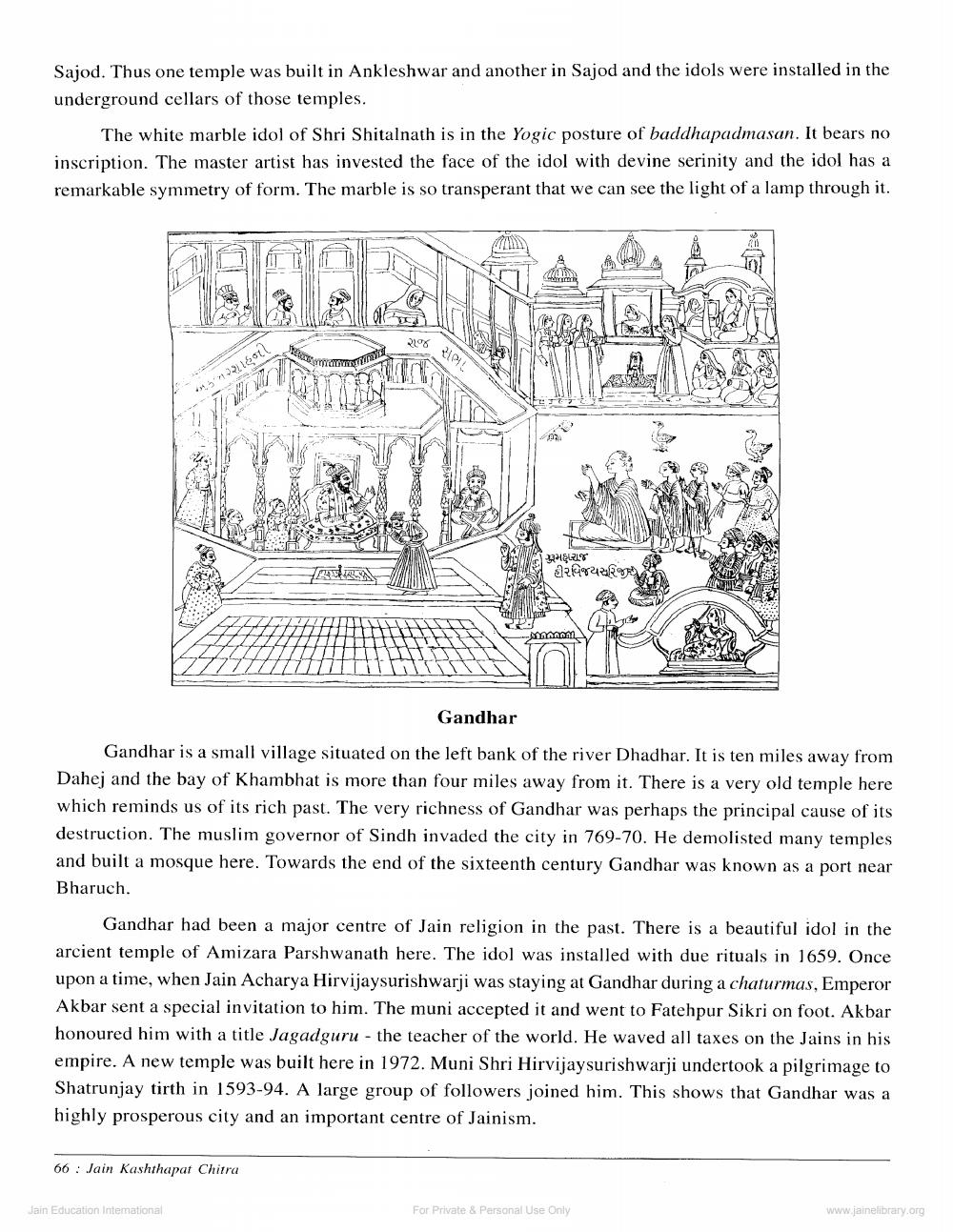________________
Sajod. Thus one temple was built in Ankleshwar and another in Sajod and the idols were installed in the underground cellars of those temples.
The white marble idol of Shri Shitalnath is in the Yogic posture of baddhapadmasan. It bears no inscription. The master artist has invested the face of the idol with devine serinity and the idol has a remarkable symmetry of form. The marble is so transperant that we can see the light of a lamp through it.
200
3
1
પ્રમજ હીરવિજયર
Gandhar
Gandhar is a small village situated on the left bank of the river Dhadhar. It is ten miles away from Dahej and the bay of Khambhat is more than four miles away from it. There is a very old temple here which reminds us of its rich past. The very richness of Gandhar was perhaps the principal cause of its destruction. The muslim governor of Sindh invaded the city in 769-70. He demolisted many temples and built a mosque here. Towards the end of the sixteenth century Gandhar was known as a port near Bharuch.
Gandhar had been a major centre of Jain religion in the past. There is a beautiful idol in the arcient temple of Amizara Parshwanath here. The idol was installed with due rituals in 1659. Once upon a time, when Jain Acharya Hirvijaysurishwarji was staying at Gandhar during a chaturmas, Emperor Akbar sent a special invitation to him. The muni accepted it and went to Fatehpur Sikri on foot. Akbar honoured him with a title Jagadguru - the teacher of the world. He waved all taxes on the Jains in his empire. A new temple was built here in 1972. Muni Shri Hirvijaysurishwarji undertook a pilgrimage to Shatrunjay tirth in 1593-94. A large group of followers joined him. This shows that Gandhar was a highly prosperous city and an important centre of Jainism.
66 : Jain Kashthapar Chitra
Jain Education International
For Private & Personal Use Only
www.jainelibrary.org




